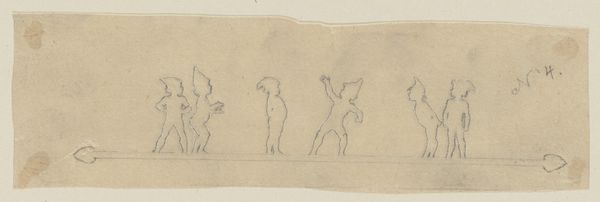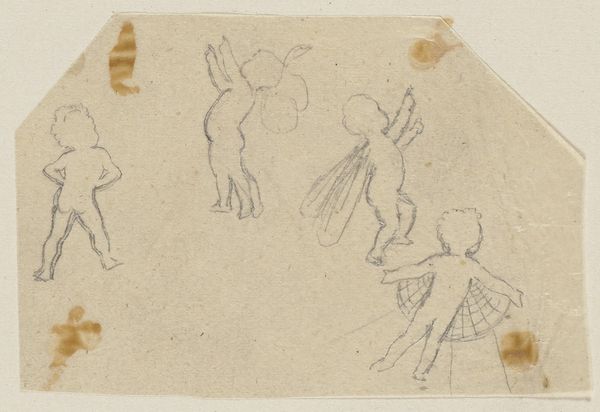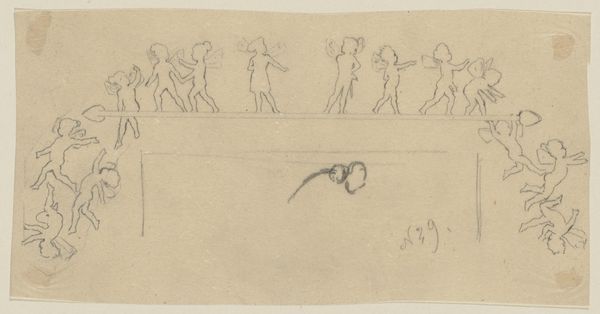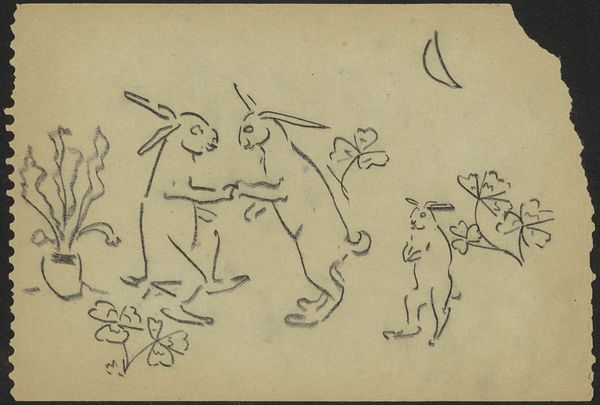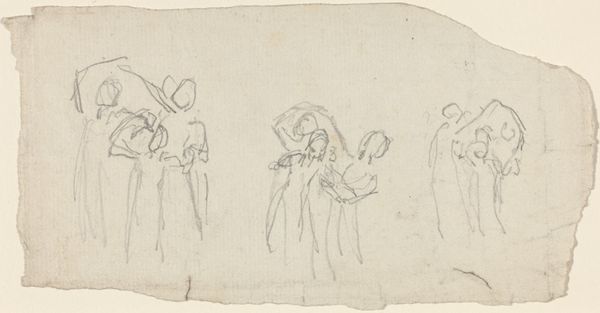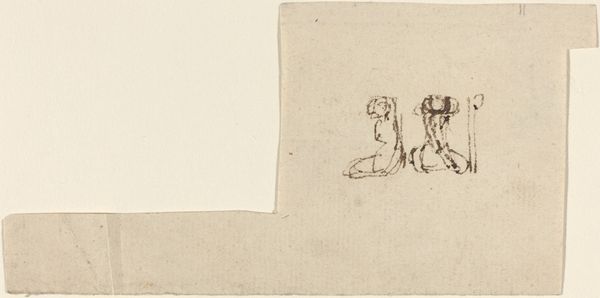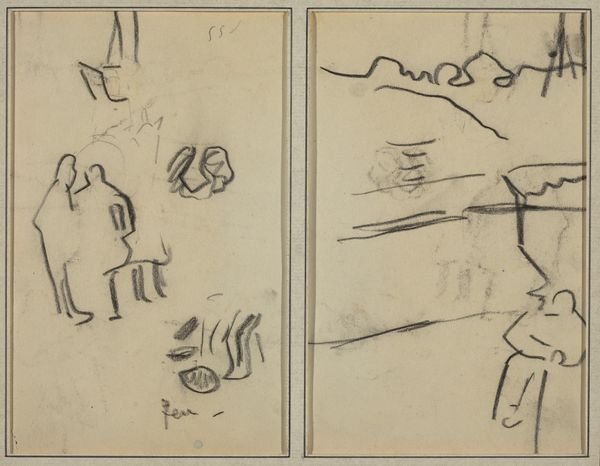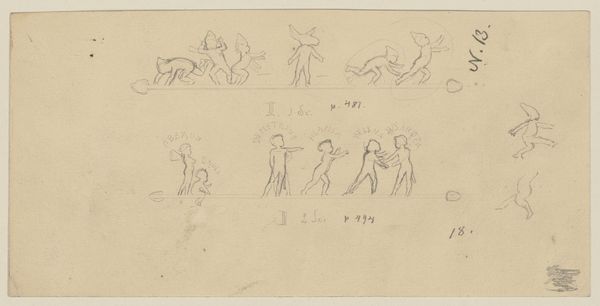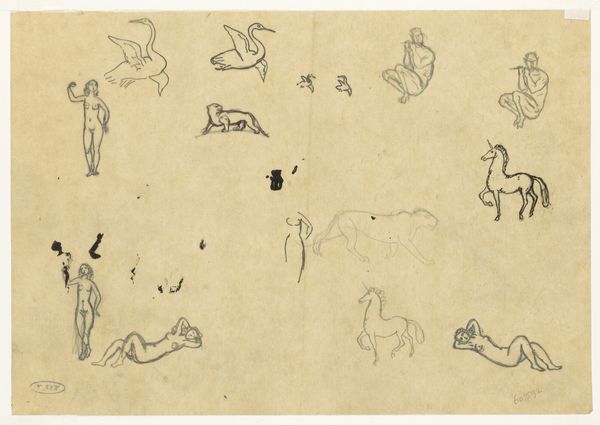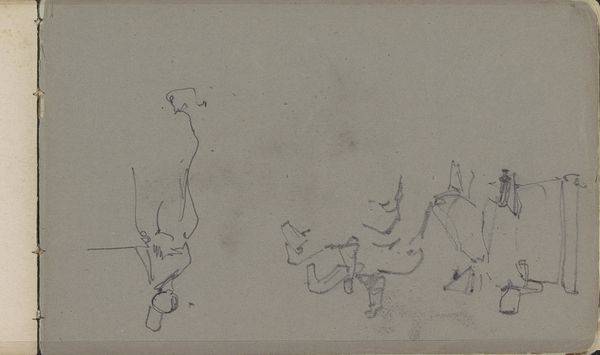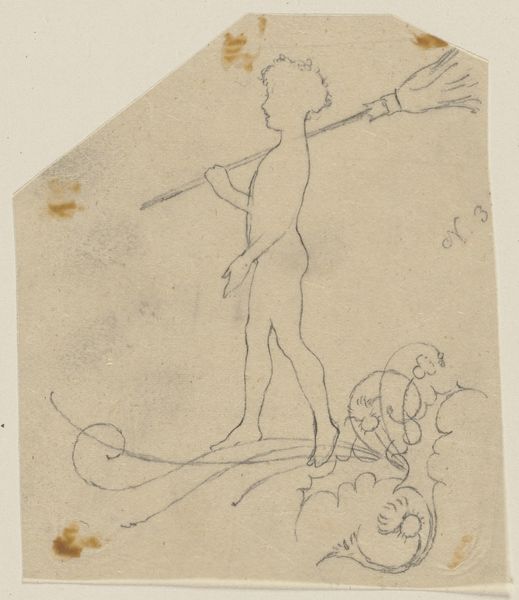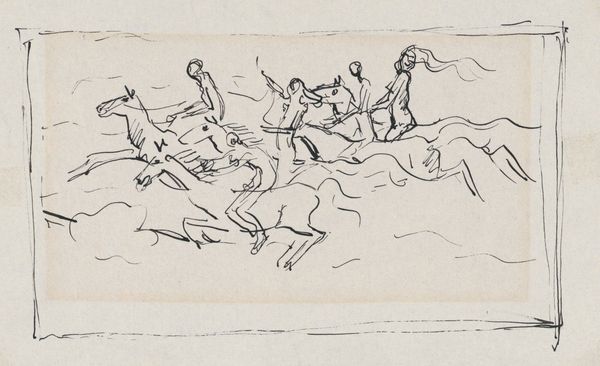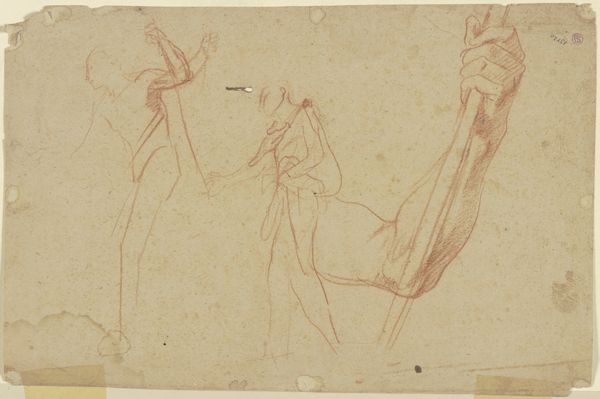
Studienblatt_ Figuren aus Shakespeares _Sommernachtstraum_ c. 1867 - 1868
0:00
0:00
Copyright: Public Domain
Editor: Here we have Paul Konewka’s “Studienblatt: Figuren aus Shakespeares _Sommernachtstraum_,” dating to around 1867-1868. It’s a light pencil drawing, very simple, showing figures in motion. It feels like a preliminary sketch, and makes me wonder what the artist was thinking as they created it. What strikes you about it? Curator: I'm immediately drawn to the raw materiality of this work. It's a simple pencil sketch, yet the quick, almost frantic lines tell a story about the labor involved. Think about the context: mid-19th century. What would this paper have been used for usually? What’s the economic reality for an artist using this medium? Editor: Presumably for preparatory sketches like this. Paper was probably cheaper than a canvas back then. Curator: Exactly! And Konewka isn’t creating a finished piece; it is raw idea generation, which gives insight into the artist’s process and production methods. Where do you see any blurring between “high art” and everyday production and what's it doing to your impression of the artwork? Editor: It makes me think about where these sketches would have been used ultimately; perhaps a low-cost, accessible printed illustration. Curator: Precisely! He takes "high art," a Shakespearean play, and translates it into something accessible. The reproduction of the artwork allows for dissemination beyond elite art circles, becoming an object of mass consumption and pleasure for others, possibly from a variety of classes. This speaks volumes about cultural shifts in the 19th century, with growing public participation, wouldn't you say? Editor: That's a really interesting point; I never would have thought about it like that. Now I am thinking of accessibility, industrial reproduction, labor, and cultural shifts instead of "fairies". Thank you! Curator: Absolutely! Art always serves many purposes when you begin looking at material and labor involved in production, and for whom that object will exist for, or appeal to.
Comments
No comments
Be the first to comment and join the conversation on the ultimate creative platform.

